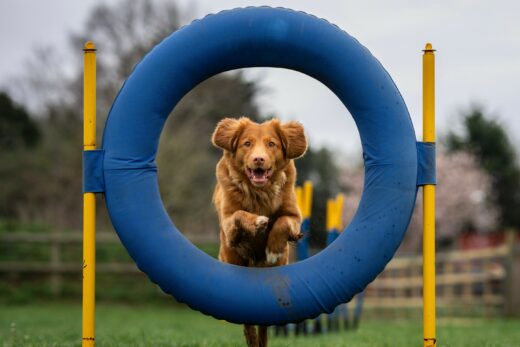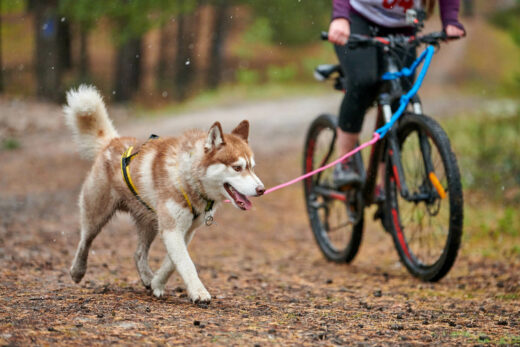Some say the best things come in small packages, and that goes for horses, too! But what exactly is a Miniature Horse and what does it cost to raise a Mini Horse, from money to time?
Though Miniatures can be closer in size to a large-breed dog than a full-size horse, cost and care to raise Mini Horses are quite different than for our canine pals. “Their care, management, training, and breeding is very similar to horses of all sizes and shapes,” says Kendra Gale, founder of Miniature Horsemanship based in Alberta, Canada. Gale’s been around Miniatures since age 1 and currently cares for 43 Miniature Horses; she also leads online classes on every aspect of Miniature ownership from feeding to showing.
With the help of Gale’s expertise, we walk through what makes Minis unique and the key things you need to raise a happy and healthy Mini Horse.

The Cost of Raising a Mini Horse: What is a Miniature Horse?
“The defining characteristic is size,” says Gale. In general, they range from 25 to 38 inches from hoof to withers (the highest part of a horse’s back). Their classification as a Mini is defined as under 34 inches or under 38 inches depending on the registry—in North America, there are two, The American Miniature Horse Association and the American Miniature Horse Registry.
Gale says that Miniatures are closely related to Shetland Ponies. In fact, horses taller than 38 inches are classified as small ponies.
Minis can have health issues specific to their breed and small stature that differ from full-size horses that their parents should be aware of. Health problems can include dental issues, deformities (such as dwarfism or a luxated patella), difficulties birthing, and issues with obesity and fat storage.
To keep your Mini healthy, it’s important to raise them according to their nutritional and environmental needs. For more on that, read on!
The Cost of Raising a Mini Horse: Is Your Lifestyle Right?
Zoning Regulations
Before you even begin looking for a Miniature Horse, check the zoning regulations for your area. “In many cases, [Miniature Horses] are considered a horse without any adjustment for the land size requirement from their larger cousins, and they are considered livestock,” says Gale. “Check with your local municipality before you make any big plans or invest in fences and shelters.” Gale says it can be complicated to find a boarding facility as well, so you’ll need to do the research to locate a stable in your area willing to take them.
Space and Fencing Requirements
“Horses—of any size—have evolved to move, so as much space as you can give them is best,” says Gale. “They should have the space to exercise, roll and express natural behaviors with their friends.” She recommends a space of at least 60 feet as a good guideline, but it depends on the size of your Minis and how many you have. Whatever you do, don’t think that a regular exercise plan can make up for a lack of space—freedom of movement throughout the day is key.
The right fencing is also important to creating a safe setup for your Mini. There are different requirements for full-size horse fencing, so be sure to take size into consideration. That means lower railings with less room to squeeze through or under, or to jump over, and materials that are safe.
The Ideal Miniature Horse Parent and Home
Miniature Horses are extremely fun and cute, but they are a lot of work and require patience and understanding. It’s important to ask yourself if you’re the right type of person to parent a Mini. Like with dogs, it’s up to us to train our pets to practice safe behaviors around people. “The most common behavioral issues I hear about involve a young horse who is an only horse and is trying to express natural horse behaviors with their humans, because they don’t have an appropriate playmate,” says Gale. “They don’t feel safe without a herd, and even one other horse will be sufficient in most cases.” She doesn’t recommend other animal companions, especially full-size horses who can injure Minis. As for introductions to your other pets? Proceed with care—a controlled environment with caution is best, says Gale.
Expense is another crucial factor in whether you’re ready to parent a Mini Horse. The purchase price of a Mini Horse can start around $1,000 and goes up quite a bit from there, depending on size, showmanship records, etc. Gale points out that infrastructure, equipment, farrier, and veterinary care must also be factored in.
What is the Cost of Raising a Miniature Horse?
“If you are brand new to horses, then a mature horse who is already trained for whatever activity you are wanting to do would likely be a much better choice than a newly weaned foal, no matter how cute they are,” says Gale. Whether looking to show or train a therapy Miniature, the health of your new horse is vital. Gale recommends having an equine veterinarian do a pre-purchase exam, which should include a complete lameness check, along with a complete physical exam. It’s a good way to start building a relationship with your veterinarian, who will be an important member of your Mini’s journey.
“I always recommend making a list of things your need and want in your new horse before you start going to actually look at horses,” says Gale, “because otherwise, you’ll simply fall in love with the first one you see.”
After researching, however, if you’ve found a Mini you love in good health (ideally more than one, as they thrive with companions), what are the next steps before bringing them home? Start with the basics.





